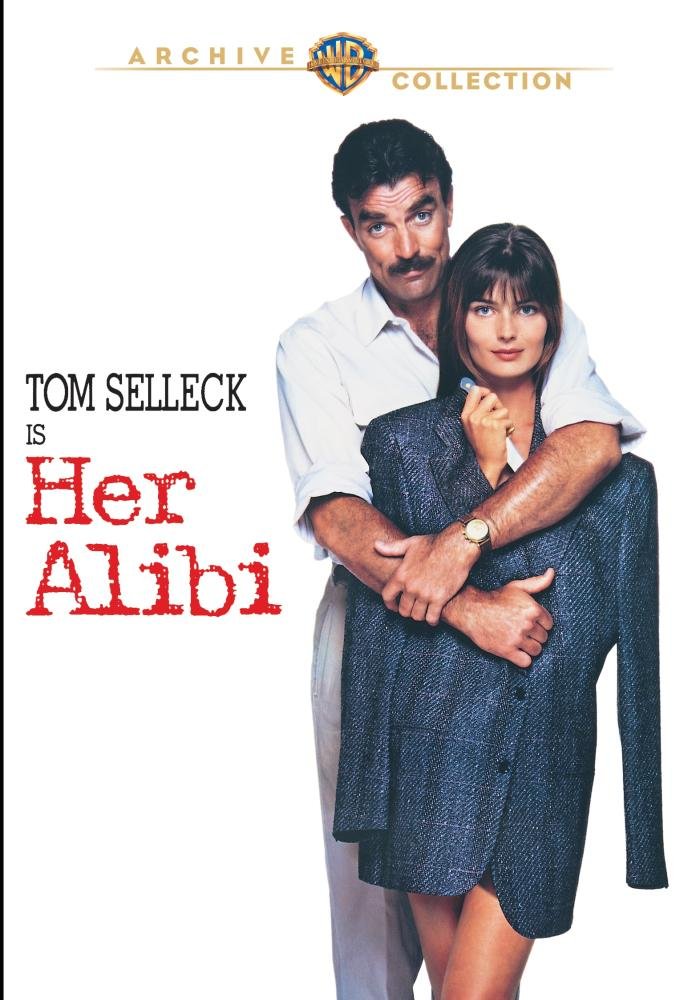
As they had done in the latter part of 2014 with several titles that truly deserved it, the folks at the Warner Archive Collection have once more taken two completely different catalog titles from the earliest days of DVD and given them the widescreen treatment they should have had back in 1998. Alas, these two titles are not on the same level as The Black Scorpion or a couple of classic Steve Martin comedies. Instead, this batch of newly widened screenings consists of movies that even I didn’t rent on video when I was a teenager. And mind you, I was at the video store every single day back then. (Heck, even when I worked in a video store and was able to rent everything for free, I still didn’t see these movies!)
But of course, that is not meant as an implication that neither 1989’s rom-com Her Alibi or the 1991 drama Guilty by Suspicion are not worth your time. Rather, both movies are excellent examples of the two different time periods they hail from. As the glorious decade of the 1980s came to a close, fashions, music, and – most importantly – taste, all made a major detour into the direction of something wholly other. And, as I struggled to get the hang of ridiculous new hairstyles, muted two-piece JC Penney’s suits, and a beardless youth that can only be described as the Dawn of Metrosexuality, high rollers like Her Alibi‘s lead star Tom Selleck didn’t even have to worry about fitting in.
Made in-between his notable theatrical hits Crimes of the Heart and Driving Miss Daisy, Australian-born director Bruce Beresford cranked out this “hip” late ’80s romantic comedy about a struggling mystery writer (Selleck) who gets involved with a Romanian refugee accused of murder. Czech beauty Paulina Porizkova (aka Mrs. Ric Ocasek) earned herself a Golden Raspberry Award nomination for her performance in this silly ditty, which finds Selleck growing gradually paranoid of his new obsession’s strange behavior as they both attempt to fight off their growing attraction towards one another. James Farentino, Patrick Wayne, and some very early (bad) CGI are in there, too, if that helps sell you at all on the subject.
For me, the funniest thing about watching Her Alibi the movie occurred when my upstairs neighbor’s washer flooded and I had to clean up a lot of water. Sure, it wasn’t funny at that particular instance in time, but once news of Mr. Selleck’s recent water troubles were brought to light, I found myself chuckling harder at that than I did at Her Alibi‘s comedy. Nevertheless, the movie remains a guilty pleasure for many. And speaking of being guilty, this is as good as a time as any to move onto our second and final feature for this article, Guilty by Suspicion.
One of the few films prolific Hollywood producer Irwin Winkler not only wrote but directed, too, Guilty by Suspicion centers on a very dark time in Tinseltown’s history. No, not the many murders and various other crimes that were covered up by powerful studio executives, but rather, that point in time when even a high-profile suit couldn’t do much to save you: the McCarthy Era. Here, Robert De Niro turns in one of his earlier non-violent roles as a movie director whose name gets mentioned to the House Un-American Activities Commission during the 1950s, when everyone was taught to fear and hate anyone who even whispered the word “Communism” anywhere in the entire paranoid country.
Refusing to play the Name Game with the power-mad representatives of the US Government looking for scapegoats, De Niro soon finds himself out of work and unable to hold down a job anywhere in the nation. Annette Bening is De Niro’s estranged wife (and only friend). George Wendt is De Niro’s writer, who also gets into hot water during the Red Scare. Martin Scorsese appears as a filmmaker, Sam Wanamaker, Patricia Wettig, Chris Cooper, Gailard Sartain, and a lot of familiar faces from the past and future alike (including a young Tom Sizemore and good ol’ Al Ruscio) also star in this earnest enough production based off of the life and career of blacklisted director John Berry.
Ditching those ugly old open matte masters, both newly widened feature films are now available in their intended 1.85:1 (or whereabouts) aspect ratios with their original English audio soundtracks in accompaniment. Like the old generic catalog discs, these Warner Archive Collection re-releases are barebones affairs, but at least fans of both titles can finally see them the way they were meant to be seen.